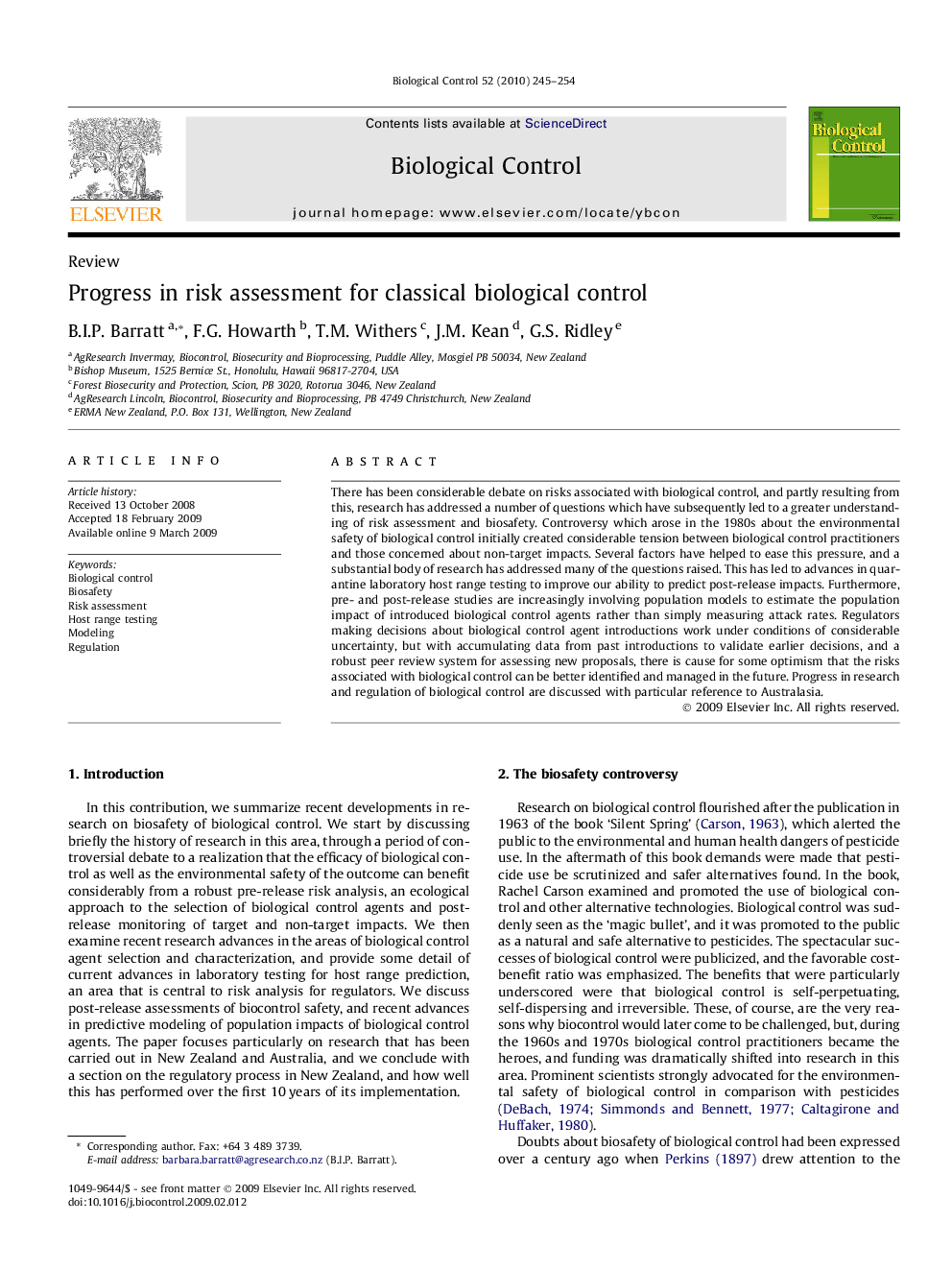| Article ID | Journal | Published Year | Pages | File Type |
|---|---|---|---|---|
| 4504607 | Biological Control | 2010 | 10 Pages |
There has been considerable debate on risks associated with biological control, and partly resulting from this, research has addressed a number of questions which have subsequently led to a greater understanding of risk assessment and biosafety. Controversy which arose in the 1980s about the environmental safety of biological control initially created considerable tension between biological control practitioners and those concerned about non-target impacts. Several factors have helped to ease this pressure, and a substantial body of research has addressed many of the questions raised. This has led to advances in quarantine laboratory host range testing to improve our ability to predict post-release impacts. Furthermore, pre- and post-release studies are increasingly involving population models to estimate the population impact of introduced biological control agents rather than simply measuring attack rates. Regulators making decisions about biological control agent introductions work under conditions of considerable uncertainty, but with accumulating data from past introductions to validate earlier decisions, and a robust peer review system for assessing new proposals, there is cause for some optimism that the risks associated with biological control can be better identified and managed in the future. Progress in research and regulation of biological control are discussed with particular reference to Australasia.
